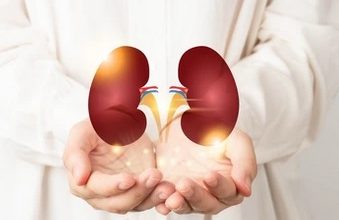Winning the War on NCDs with Technology
Prof D Prabhakaran - Vice President Research, Kavita Singh - Research Scientist, Public Health Foundation of India (PHFI), New Delhi

The non-communicable diseases (NCDs) such as heart disease, diabetes, hypertension, cancer and mental disorders are the leading causes of death and disability in India, like most parts of the world today. The rapid rise of these chronic diseases in India is particularly concerning due to under-resourced health systems and consequent catastrophic social and economic impacts. Use of simple, inexpensive and effective technology innovations that focus on prevention and management of NCDs – especially cardiovascular disease, diabetes, and mental health – offers the greatest opportunity to avert millions of premature deaths and even greater unnecessary suffering.
Where Technology Can Help
Novel use of technology and task-sharing strategies opens many opportunities to enhance the efficiency of care, speed the implementation of effective treatment plans, decrease the morbidity and premature deaths, and ultimately reduce the overall health care costs.
NCDs Screening, Detection and Care
In India, a very large proportion of people do not know that they have risk factors (e.g., high glucose, high blood pressure, high cholesterol) for NCDs. Having a system that detects these conditions proactively is important, but that is the first step, and often effective without careful coordination of prevention and control after the detection is done. Detection of NCD risk factors requires simple, reliable, safe, and low-cost approaches, and once people are detected with risk factors, they need a continued care delivery system that provides effective behaviour change (e.g., smoking cessation, improvement in diet and physical activity) and affordable medications.
Furthermore, these systems need in-built measures of ensuring delivery of and compliance with these medications on a long-term, most often lifelong basis, and regular monitoring of control of risk factors of early signs of disease, so that prevention efforts and treatment can be appropriately intensified. All of this is seldom achieved by focusing only on the patient alone or on the physician alone or assuming that the process of physician-patient interaction will be able to address all of these issues in a sustainable and effective manner: rather it requires a health system-level approach to quality assurance, conceptualized in a way that empowers the patient, eases the burden on physicians, and proactively coordinates and monitors control of risk factors and complications in a methodical and structured manner.
New Technological Interventions
Many technology innovations have been recently successfully demonstrated in disease surveillance, survey data collection, screening, diagnostics and disease management. For instance: use of geographic information systems, computerized cardiovascular risk assessment, portable diagnostic equipment (lab on chip, portable ECG), the use of biomedical sensors that are integrated with GPS (global positioning system) to provide accurate estimation of physical activity and electronic health records – decision support system. There are numerous advantages of using information technology (IT) as it enables real time data access, ensure data accuracy (with inbuilt checks), data security (back-up), big data analytics, improves timelines, and is eco-friendly (paper less and re-useable) and allow application of processes in multi-language mode. An example of innovative use of GIS (geographic information system) technology is in mapping clusters of high blood pressure and neighbourhood built environment. In a study conducted by the Public Health Foundation of India (PHFI), Centre for Chronic Conditions and Injuries (CCCI) has demonstrated that the neighbourhood systolic blood pressure is higher in areas with high traffic density (unpublished data). While the high blood pressure could be attributed to noise pollution, other potential reasons such as lack of physical activity and unhealthy diet need to be explored with adjustments for socio economic status of the individuals studied.
Effectiveness of Technology-enabled Health Interventions
Furthermore, at the PHFI, CCCI, we have developed and evaluated the effectiveness of several technology-enabled health interventions to screen and identify populations at risk of NCDs and to effectively manage hypertension, diabetes, cardiovascular risk reduction, and depression. Notable examples include: mPower Heart study and the CARRS Translation Trial.
m-Power Heart (Sub-sub head)
The m-Power Heart study was carried out in the Solan District, Himachal Pradesh with primary objective of designing a feasible and sustainable evidence-based, decision support-enabled, health care delivery model for the management of hypertension and diabetes in the primary health care facilities. The mPower decision-support system (DSS) was used by Nurses at the NCD clinics of community health centers (CHCs) and had the key features like: screening for hypertension/diabetes and suggestions for diagnostic investigations; guidelines based management plan for hypertension and diabetes; longitudinal health records; lifestyle advices tailored to patient profile; and quality assurance checks. Trained nurses carried out opportunistic screening of 22,009 individuals (≥30 years) with the help of mPower DSS at NCD clinics over a time period of 21 months and identified 6797 patients either with hypertension and/or diabetes. There was significant reductions in systolic blood pressure, diastolic blood pressure, and fasting blood glucose at 18 months of follow-up: -14.6 mmHg, -7.6 mmHg, and -50.0 mg/dL, respectively, and these improvements in blood pressure and blood glucose were statistically significant even after adjusting for age, sex, and CHCs.
CARRS Translation Trial (sub-sub head)
The CARRS Trial at ten sites in India and Pakistan, among 1,146 patients with diabetes, evaluated a model combining patient education, a non-physician care coordinator (to enhance patient’s adherence to therapy), electronic health records and clinical decision support system (to ensure consistent and continuous evidence-based care, with features to provide specific reminders to physician and patients), and ongoing measurement of processes and outcomes of care. This pragmatic implementation trial has shown that major improvements in diabetes quality of care and in control of risk factors (glucose, blood pressure, lipids) is imminently feasible even in resource-challenged settings with significant proportion of less educated patients. In fact, the levels of improvement achieved were far higher than those seen in similar trials in high-income countries. We are now in the process of scaling up and evaluating this intervention, via primary care, at the District level, leveraging ongoing NCD programs, and also developing and testing models to manage multiple conditions simultaneously (e.g., diabetes, hypertension, and depression; or diabetes and TB), as large numbers of people have more than one NCD-related condition.
Need-of-the-hour
Technology like cell-phones or web-based approaches provide an important means of helping strengthen the system, and connecting the various interfaces (e.g., patient and physician; primary and secondary care).
Digital and portable technologies offer the most exciting opportunities to leap-frog barriers to improving the coverage and quality of preventive, diagnostic and therapeutic interventions to effectively control the chronic disease burden in India. A partnership between the diverse technology innovators in the country with clinical and public health researchers is the need of the hour to harness the technology-enabled interventions and task-sharing opportunities to contribute to the improvement in health of the nation.
To read the rest of the article Subscribe Now




